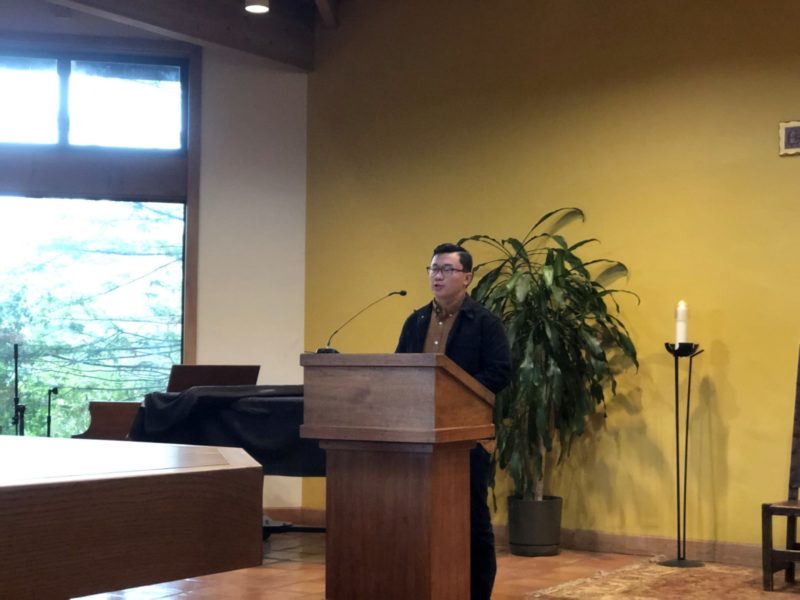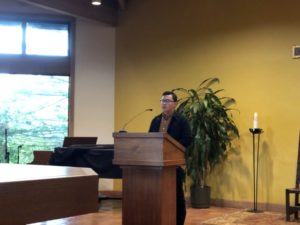This Giving Tuesday, I returned to my high school, Woodside Priory, winners of the 2018 Make Hunger History Bumper Crop Award. Each week, students gather in the chapel and listen to a “chapel talk,” a personal address often given by a member of the school’s community. On this day of giving, the Priory invited me to speak about service.
Second Harvest staff receive frequent opportunities to discuss our efficiency, nutrition guidelines and 260,000 people served each month. However, this speech provided a chance to explain the emotions that inspire the impressive statistics.
My message surrounded making service meaningful.
Looking back, Priory was an incredible place with an environment to experiment and discover passions. My classmates were encouraged to be both athletes and performers, and showing up for any club, class or activity meant being welcomed by caring teachers and friends. This support was not just superficial–when my mother went through a health issue, I stayed at classmates homes during holidays like Thanksgiving and Christmas. Teachers whose classes I had never taken would check in with me throughout the day. This environment culminated in an opportunity to cook a healthy breakfast for the Peninsula Bridge Program, a college access organization for underserved students.
From this point on, I investigated the links between food and service. One striking moment occurred while working in a kitchen in France. I worked under experienced French-born chefs and learned alongside fellow commis–low-level trainees who had recently migrated from Algeria, Senegal, and Brazil. These two groups seemed incompatible outside of the kitchen, with an older pastry chef describing the international movies he watched with his wife while commis packed leftovers for their siblings before travelling to cramped apartments on Paris’ outskirts. However, our kitchen bonded through respect for each other’s dedication (and sometimes soccer or Rihanna). When the chefs invited patrons to stay for wine, they would serve us at the same time, rummaging through the kitchens for sodas for the Muslim cooks. On the other hand, patrons largely forgot about the commis while taking photos with the chefs. Only one man ever approached our dishwashing corner and shook our hands with a thank you.
I still think about this rare gesture of empathy, for this man overlooked the boundaries people draw between themselves and others. Assumptions about class, race, nationality, and education render essential contributors invisible, but this customer acknowledged our importance. Here I saw the walls built between those who serve and those who are served. I vowed to always be in service of others.
I concluded my speech by discussing the meaning I find at Second Harvest. I left high school thinking that Second Harvest was a warehouse of canned food, and I didn’t want the same for these students. A Second Harvest distribution is also the trust that builds between clients and volunteers. I once met an elderly Chinese couple who used a lifetime of working in fisheries and hotels to rapidly break down empty boxes of produce. Eventually, these clients asked a young volunteer to write them a reference for the retirement home they hoped to enter together. Food’s universality allows these cross-cultural connections to occur. Groups invisible to each other become friends.
I find my work at Second Harvest rewarding because of stories. Here, I see the intersections of inequality, food, and culture more clearly than ever before. There is such complexity in how people interact and receive their food. And this position has cemented how service should be a part of everyday life.

